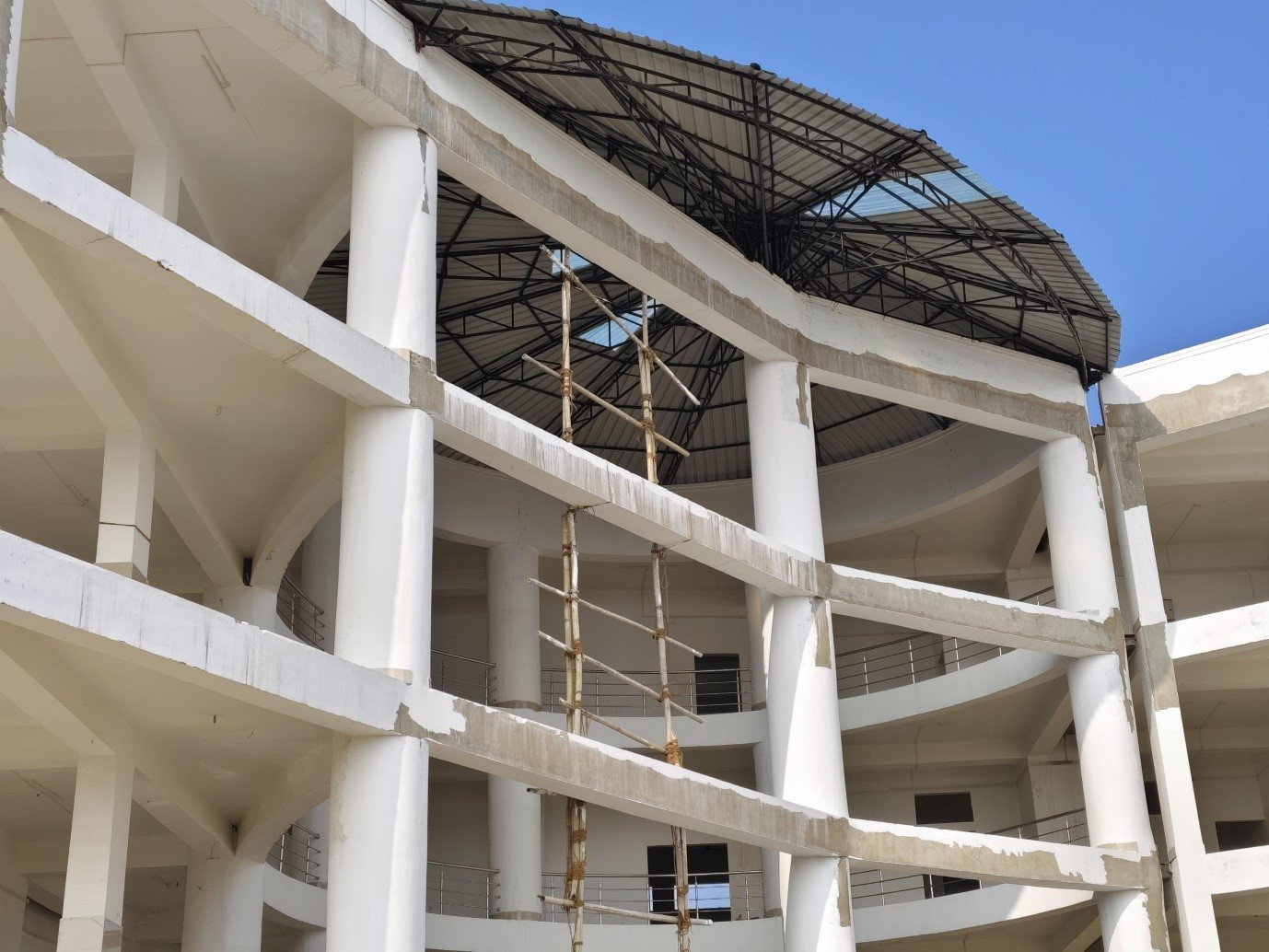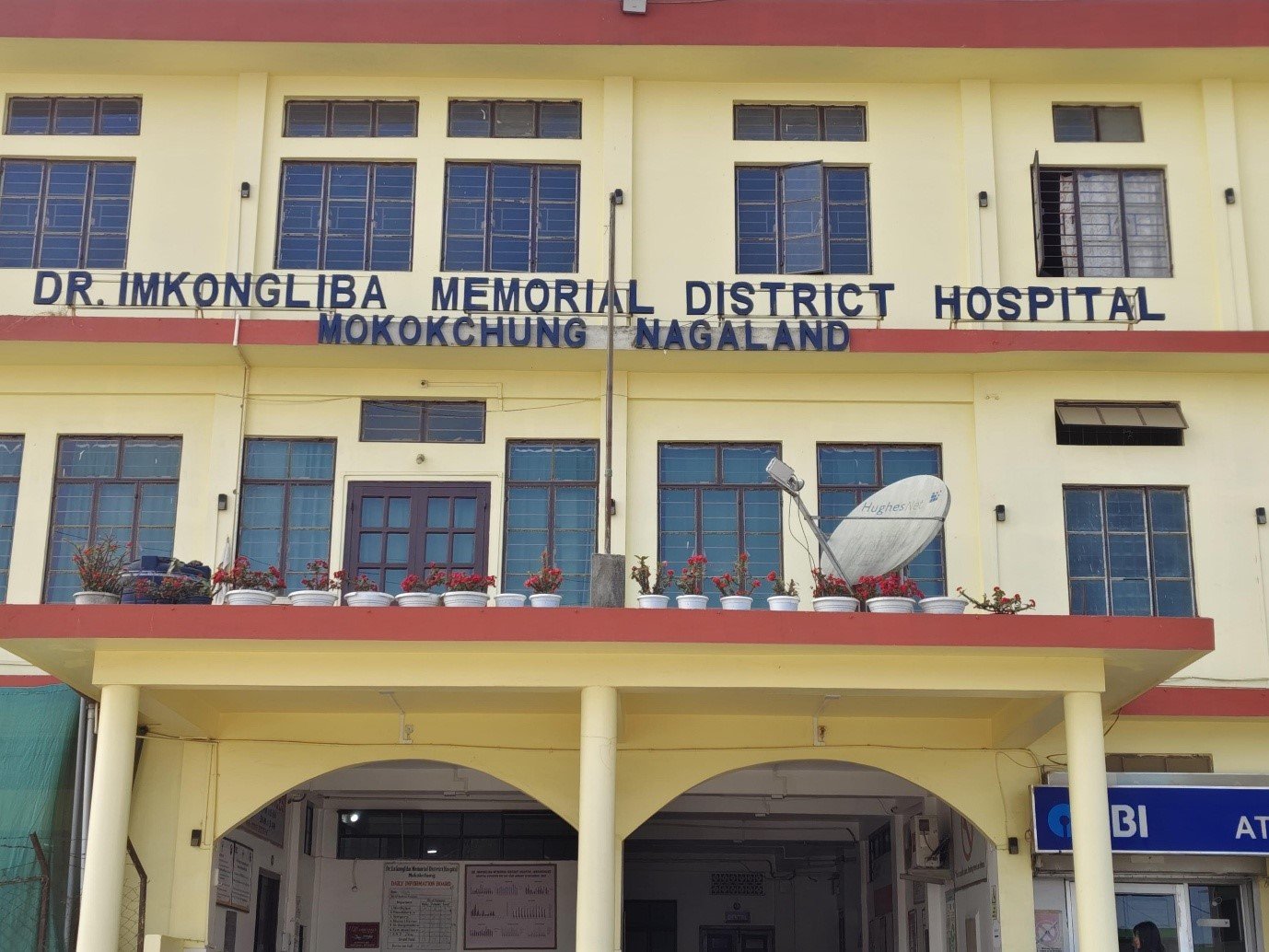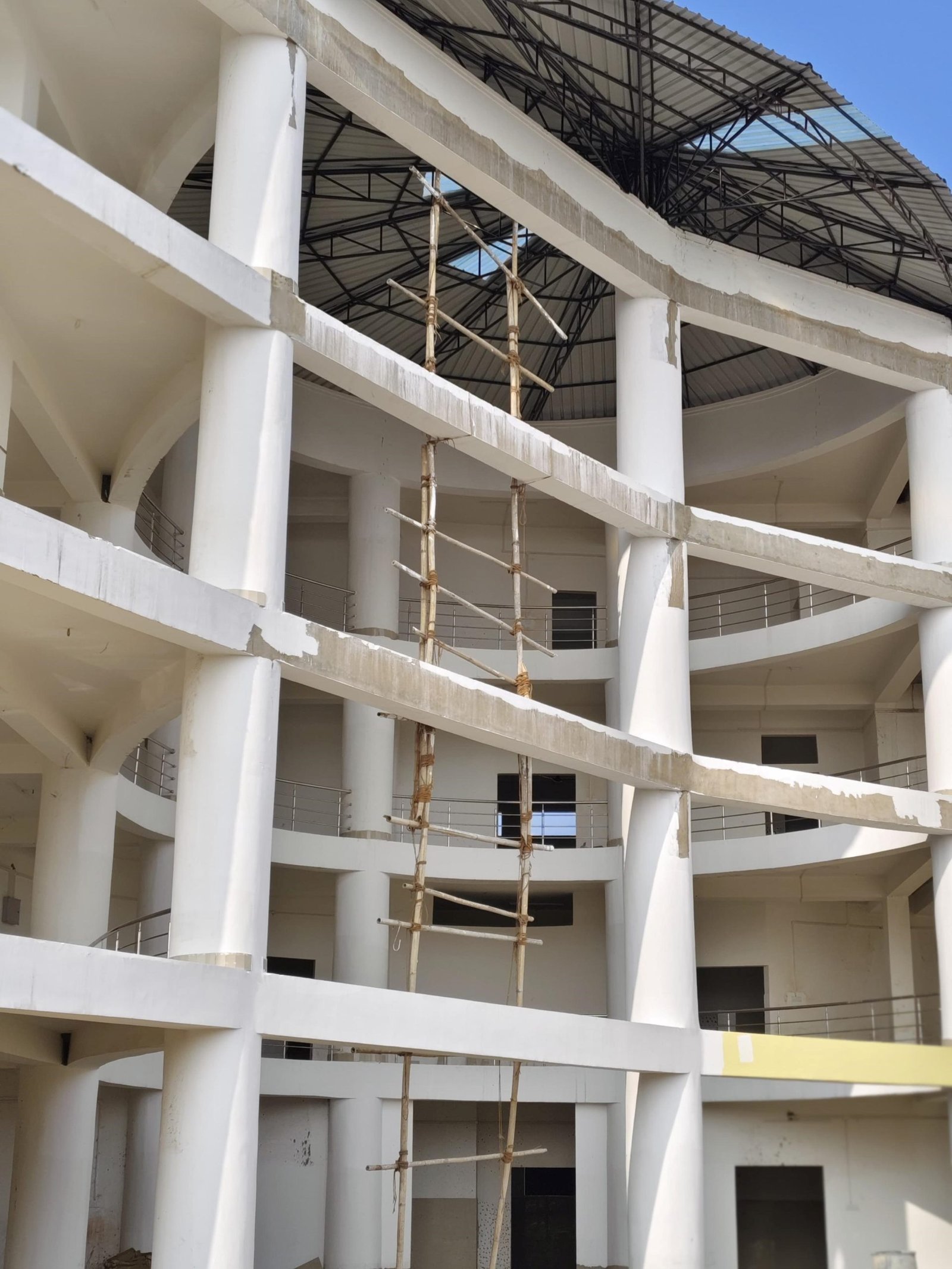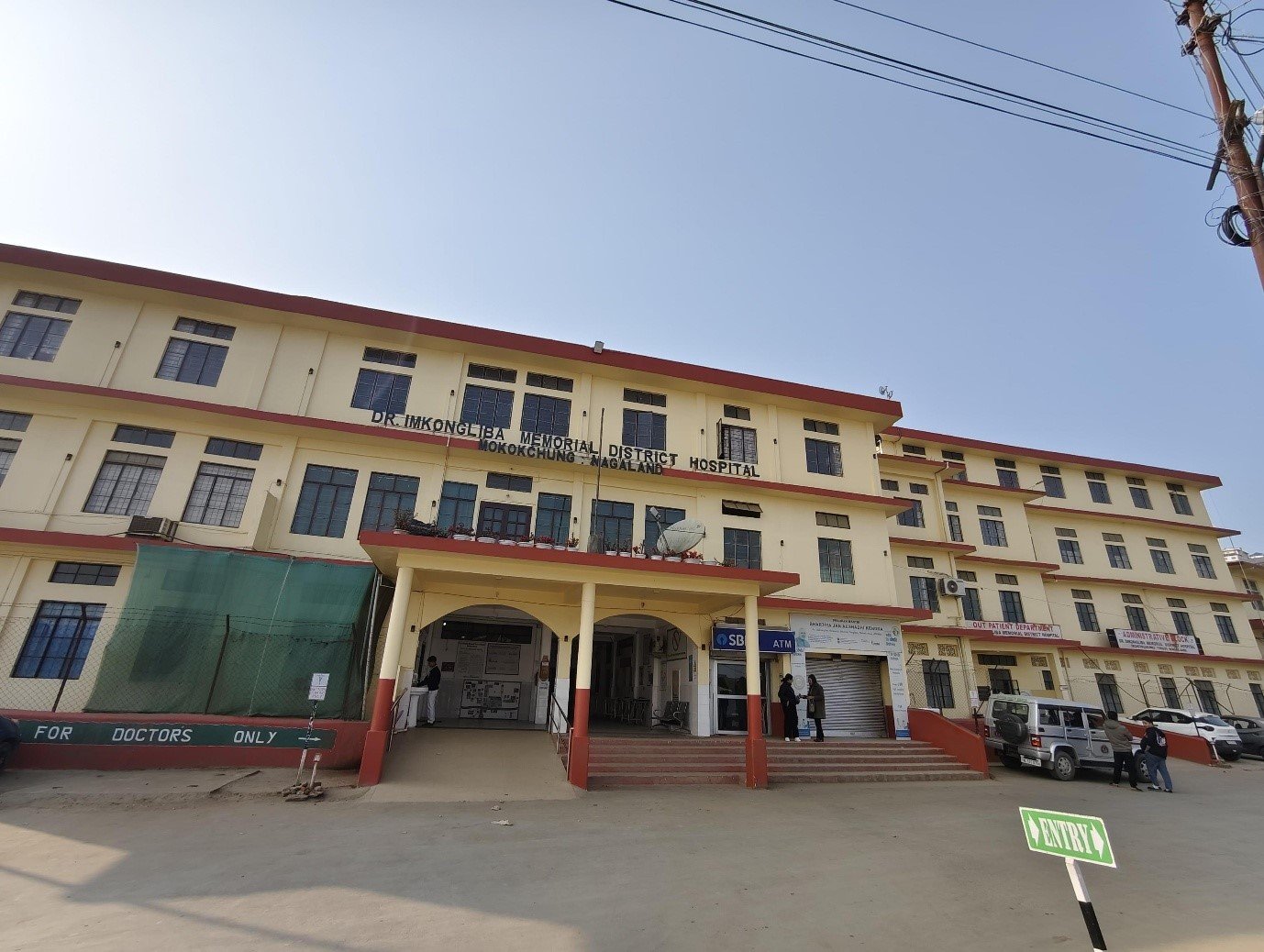The Dr Imkongliba Memorial District Hospital (IMDH) in Mokokchung is facing a crisis due to a critical shortage of doctors, delays in infrastructure development, and a lack of essential government-appointed support staff. A joint inquiry by Mokokchung Times (MT) and Nagaland Tribune (NT) revealed significant systemic failures, including recruitment challenges, bureaucratic bottlenecks, and governmental inaction. The inquiry also highlights the severe impact these issues have on patient care, with hundreds of patients being underserved daily.
IMDH witness an average of 250-300 patients daily. However, despite officially employing 17 doctors, only four are available for emergency services. Among these 17, three are dental specialists and two are AYUSH doctors, none of whom are involved in emergency care.
According to hospital protocol, senior doctors with over 18 years of service are exempt from emergency duties, leaving the responsibility to the four available specialists. This has placed undue pressure on junior doctors, who are now responsible for the majority of emergency cases. As a result, patients experience long waiting times, postponed surgeries, and, in some cases, are turned away due to the lack of available medical officers.

The situation worsened In 2024 when four specialist doctors were transferred from IMDH, with only one replacement provided. Hospital sources confirmed that the institution was already facing manpower shortages before these transfers, and the failure to fill these vacancies has significantly deepened the crisis.
Dr E Motsuthung Patton, Principal Director of the Department of Health and Family Welfare, acknowledged the ongoing challenges during a telephonic conversation with MT.
“This issue was also raised by the Ao Senden after the reshuffling in July last year. They came to the office, and we informed them of the difficulties. There is a shortage of medical and paramedical staff in the department as a whole,” said Dr Patton.

“For the past 5-6 years, at least 10 doctors have retired each year. This year, 16 senior doctors are retiring. So, we have an acute shortage of doctors in the state,” he continued.
Dr Patton went on to explain the transfers of the four doctors, stating, “As for IMDH, we took four doctors on transfer—an eye doctor, which we have replaced. It was a cross-transfer from Zunheboto to Mokokchung. There was another ENT doctor, a skin doctor who was transferred on his own request, and one was transferred on promotion. We have informed the Ao Senden that we will not be able to replace all four doctors.”
“I believe IMDH has enough essential specialists compared to other districts,” he said, adding, “The hospital employs 17 doctors, including specialists in various fields. As for the lab technicians, they have 11—2 regular, 1 adhoc, and also some appointed from NHM and so on. IMDH has also appointed two on their own.”
He acknowledged the vacancies for lab technicians in IMDH, stating, “These days, all grade-3 posts are filled through NSSB, but they do not conduct exams every month.”
“Regarding nurses, IMDH has more than 100 nurses. As for CMHIS and PMJAY, the hospital can appoint staff from its own resources, and in this regard, IMDH has appointed them because the department cannot recruit anyone. There is a blanket ban on recruitment by the government unless someone is retiring,” added Dr Patton.
The shortage of doctors Is directly impacting the hospital’s ability to provide essential emergency services. For instance, IMDH currently has only one anesthetist, who is assigned six emergency duties each month. On the one day she takes leave, the operation theatre is closed, preventing any emergency surgeries.
Similarly, the hospital’s radiologist also handles six emergency duties each month. When the radiologist is called in for an emergency case, ultrasound services for the following day are suspended, creating delays in diagnosis and treatment.

When these issues were conveyed to Dr Patton, he responded, “There is an acute shortage of manpower in the department. Out of the 514+ sanctioned posts, we have fewer than 400 in service. Some doctors, about 20, have gone to NIMSR (Nagaland Institute of Medical Sciences & Research). There has been no recruitment by the NPSC for the past 5-6 years, and almost every year, 10 or more doctors retire. We cannot keep two or three specialists in one hospital under these conditions.”
“Regarding emergency duty, there is no hard and fast rule that senior doctors should not do night duty. I did night duty for sixteen years while posted in Wokha, so there’s no hard and fast rule. It depends on the authority of the district on how to arrange this,” he added.
Download Nagaland Tribune app on Google Play

During a visit to IMDH in November 2024, Health Minister Paiwang Konyak acknowledged the state’s severe shortage of over 100 doctors. However, recruitment efforts remain stalled due to a protracted legal dispute. The Directorate of Health and Family Welfare (DHFW) had introduced a Special Recruitment Drive to regularize doctors hired during the Covid pandemic, but this initiative has faced significant opposition. As a result, it now hangs in the balance, awaiting a crucial court ruling that will determine its future. The delay in recruitment is only compounding the hospital’s difficulties.

Regarding the matter, Dr Patton said, “The NPSC is also saying, unless the Special Recruitment Drive is completed, recruitment cannot be done.”
When asked if the issue has become a matter of state policy, Dr Patton confirmed it.
Regarding potential contract-based recruitment to alleviate the crisis, Dr Patton stated, “There is no contract appointment now. It is totally banned by the government. The department can only appoint grade-IV staff, and only for retirement vacancies, because no new posts are being created.”
Dr Patton also highlighted the acute shortage of medical professionals across the state: “Almost every district faces a shortage of doctors. In fact, more than 70 Primary Health Care centers don’t have medical officers.”
When asked about the government’s response to these issues, Dr Patton said, “We have discussed it before, and we are planning to discuss it again in the coming days.”

Regarding the threat of a mass agitation by the Ao Students’ Conference (AKM) if the problems are not addressed, Dr Patton remarked, “I have already stated how, in terms of exact figures, there is no shortage of manpower in IMDH. If you compare it to other districts, there are enough staff.” However, he mentioned, “The department is also trying to do some minor exercises…it might not be up to their expectation,” he added.
On the issue of whether the department plans to address these challenges on healthcare during the upcoming Nagaland Legislative Assembly (NLA) session in March, Dr Patton stated that discussions have not yet taken place with the Health Minister.
Regarding the government’s stance on the crisis, Dr Patton insisted that there have only been discussions so far.
In addition to the Special Recruitment Drive, according to Minister Paiwang Konyak, the department is reportedly postponing recruitment due to the proposed implementation of a two-cadre system, which would classify doctors into Specialized and Non-Specialized categories. He said this during his visit to IMDH in November 2024.
He emphasized that the department’s focus on creating a two-cadre system is one of the reasons for the delay in filling vacancies.

Meanwhile, in the interim, it was learned that the DHFW has encouraged IMDH to hire contract-based doctors, but the hospital has struggled to attract applicants, with no doctors expressing interest in working in Mokokchung, according to hospital sources.
While recruitment issues persist, IMDH also faces long-standing infrastructure delays and chronic staff shortages that further compound the crisis.
Beyond the lack of doctors, IMDH also suffers from a severe shortage of support staff. The hospital has employed 27 fourth-grade workers—including electricians, plumbers, sweepers, and waste segregation staff—on minimal salaries, due to the absence of full-time government appointments.

Meanwhile, the hospital’s long-awaited expansion has been stalled for years. Initially set to increase from 95 to 200 beds, the completion of Blocks A and B has been delayed indefinitely. Block A remains unfinished after seven years, despite a proposed three-year timeline. Minister Paiwang Konyak, during a district hospital inspection on November 20, 2024, allocated Rs 3 crore for Block-A completion and Rs 2 crore for the Critical Care Unit. The construction, under the National Health Mission, began in January 2018 with a three-year deadline.
